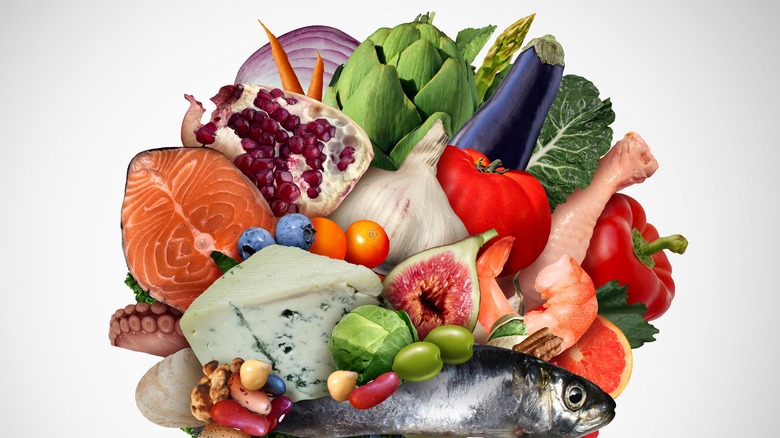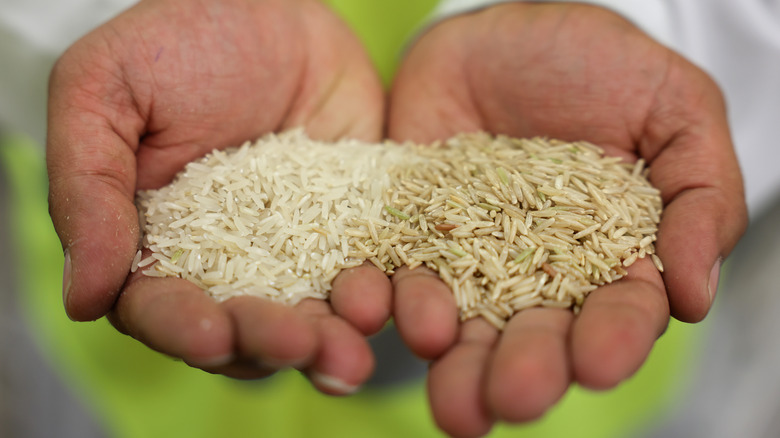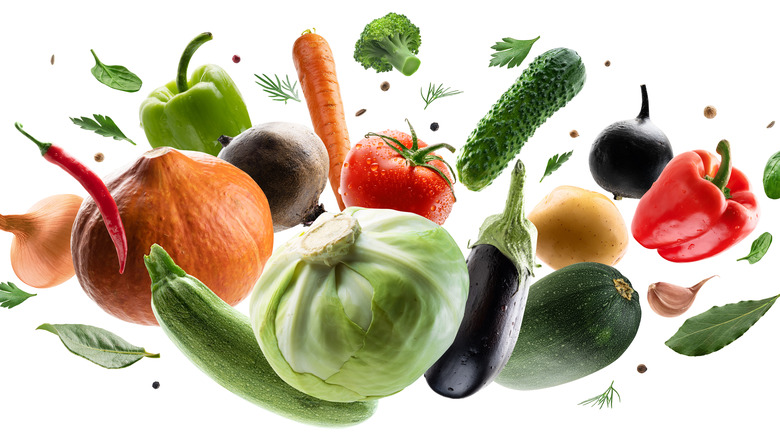Here's Exactly What Defines A 'Whole Food'
Food labels can be confusing — and sometimes they're even misleading thanks to a lack of oversight. For example, the terms "natural" and "all-natural" are largely unregulated and, as a result, pretty meaningless. So, it's important to know the significance behind different descriptors, such as what a whole food is. This will help you understand not only what to look for but also what to be wary of when it comes to questionable labeling.
Fortunately, the term "whole foods" is relatively cut and dry (the grocery chain, which carries numerous non-whole foods, notwithstanding). It simply refers to foods that have not undergone extensive processing. These foods are generally easy to spot because they are literally sold whole, such as fresh fruits and veggies, complete grains, dry beans, nuts, and seeds, as well as raw meat and plain dairy (without additives). Non-whole, processed foods are also easily identified by their nutritional labels, often including a laundry list of ingredients. Whereas a whole food will stand alone, processed foods almost always include added ingredients like sugar and other sweeteners, sodium, fats, dyes, and preservatives. There are always exceptions, of course. Sometimes, processing is what's taken away and not what is added — as is the case with white rice, which is refined to remove parts of the grain and then supplemented to restore some of the missing nutrients.
Are whole foods labeled?
As a general rule, most whole foods won't be labeled as such. These include fruits and vegetables, which are sold whole and usually without any packaging, as well as meats from the butcher counter, dairy that's been processed for food safety only, and dried beans, nuts, and seeds. Some whole foods, such as whole grains, will be labeled. And it's essential to know the difference between labels to ensure you get a whole food.
The Whole Grain Stamp from the Whole Grains Council comes in three different versions: The 100% stamp, the 50% stamp, and the basic stamp. But keep in mind that the label only applies to the grains in a product, so the 100% stamp could still appear on a processed food if all of the grains used to make it are whole. Naturally, the stamp will only be a good reflection of a whole food if it appears on a package of pure grains, such as brown rice or whole wheat flour. There are also deceptive terms and labels that are specific to grain-based foods but do not denote that what's inside is a whole food, including "multigrain" and "made with whole grains."
Labels are not the best way to determine if a food is a whole food. Instead, consider the state of the food. Is it in its original, unprocessed condition? Or does it come with a list of ingredients?
What makes whole foods so appealing?
Whole foods are an integral part of clean eating, which is the opposite of eating highly processed foods full of added sugars, sodium, and unhealthy trans-saturated fats (not to be confused with naturally occurring, good-for-you fats in whole foods). Focusing on whole foods will also make getting the vitamins, minerals, and antioxidants your body needs much easier.
Of course, that's not to say you should only eat whole foods. Some processed foods contain versions of nutrients that are easier for the body to take advantage of than their fresh counterparts. A good example of this comes from canned tomatoes or tomato sauces, from which lycopene is more readily available than fresh ones. As always, balance is important. Knowing what a whole food is and how to identify it will make it easy to make whole foods a significant part of your meal plan. That way, you can be sure you're getting the nutrients you need while enjoying a well-rounded variety of foods.


